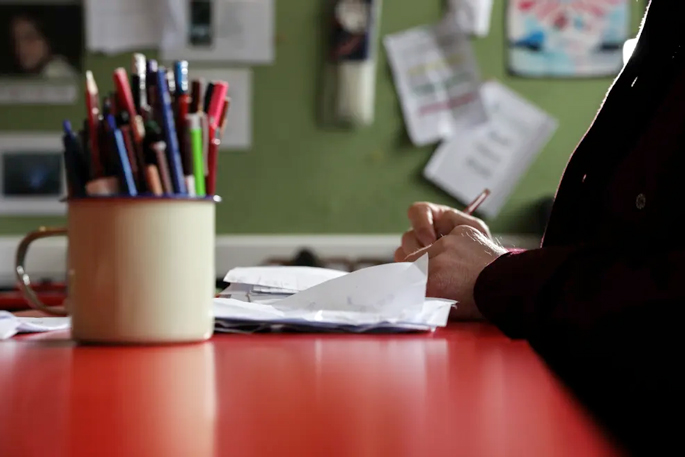Less than a week away from the first students of the year heading back to school, some principals are still crying out for staff to fill final roles.
Meanwhile, other schools which have managed to fully staff each class are desperate for more relievers in the chance teachers were sick or away from work, calling the situation "dire".
The shortage in applicants is causing principals to resort to employing teachers from overseas and stepping in to teach themselves.
All types of schools are being affected, and the additional burdens on senior management is causing a mass exodus of principals, according to some.
Papatoetoe High School students will start their year just after Waitangi Day.
Principal Vaughan Couillault still has some roles he needs filled two weeks out from the big day.
"I still have a maths - science vacancy to fill," he said, "and I also have a hard materials vacancy that I need to fill as well, and those have been advertised since before Christmas."
Couillault, who is also the president of the Secondary Principals Association of New Zealand, says it's not a new issue, but it's one which is not getting any easier.
"It is challenging still to attract quality applicants to positions, so I've got a position that I've advertised at the moment for example, and whilst there are applicants for that job, there aren't any that are currently based in New Zealand."
 Despite the difficulty, the Ministry of Education estimates there will be more than enough primary school teachers this year, and likely enough secondary teachers. Photo: RNZ / Cole Eastham-Farrelly.
Despite the difficulty, the Ministry of Education estimates there will be more than enough primary school teachers this year, and likely enough secondary teachers. Photo: RNZ / Cole Eastham-Farrelly.Kaitaia Primary School principal Brendon Morrissey is lucky to have classrooms full of rostered teachers for its first day on January 30.
But even that doesn't mean he's out of the woods, he says.
"We have not got very many relief teachers, so if teachers are away sick then we have to look into internal options for coverage and that can often mean senior management are going into the classrooms or there are classrooms being split for the day."
The entire surrounding region of Kaitaia iss leaning on extremely limited relieving staff to fill in those gaps, Morrissey says.
"Realistically, two. For a school of well over 300 children, 15 classrooms, two relievers."
The immediate solution if relievers can't fill in is to give remaining teachers a greater workload, says Morrissey.
But he says that will put additional stress on teachers and principals, and disrupt the learning of students.
He told RNZ there are Ministry of Education documents which show almost 200 principals left the profession last year.
The ministry acknowledges the existence of a document, but will not confirm a number.
"One word - dire. We cannot continue this way for much longer," Morrissey says. "What's going to happen is that high attrition rate is going to keep going on and we're going to lose more and more."
Raglan Area School principal Louisa Barham says it's especially hard for rural schools to employ and retain qualified high school teachers.
"It's really hard for them to compete with the larger schools," she says. "If I want a maths teacher, the maths teacher really has to have a second string to his or her bow.
"Because I won't have enough maths teaching for them to have a full-time job."
Specialty teachers, especially those fluent in te reo, were "head hunted" for their abilities, Barham says.
 Raglan Area School principal Louisa Barham says specialty teachers with te reo knowledge are sought out. Photo: RNZ / Tom Furley.
Raglan Area School principal Louisa Barham says specialty teachers with te reo knowledge are sought out. Photo: RNZ / Tom Furley.And that led to searches for teaching staff kicking off up to seven months in advance.
"Most principals, no matter what school you're in, you're looking to recruit for the following year in June," Barham says.
The additional stress and responsibility is becoming an overbearing burden on senior management and principals, she says.
"I'm in the Facebook principal's page, they're just leaving in droves," she says. "Every week you're looking online and someone's saying 'bye, I'm out'."
Despite the difficulty, the Ministry of Education estimates there will be more than enough primary school teachers this year, and likely enough secondary teachers.
Education Workforce Hautū Anna Welanyk is not as quick to jump to the conclusion that there is a mass exodus of principals.
"We collect retention data which shows the retention rates for all principals is consistently at or over 92 per cent," she says.
A spokesperson for the ministry told RNZ the specific number of principals who left the job in 2023 is still being worked on.



1 comment
The Master
Posted on 27-01-2024 12:25 | By Ian Stevenson
Quality is better than quantity any day.
Leave a Comment
You must be logged in to make a comment.